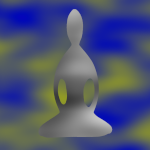Dear Friends,
After January 1’s post on Intention, Rod commented that actions are needed to make intentions meaningful. I think Rod’s comments align with this sentiment from Thich Nhat Hanh:
Chapter 3 of The Four Foundations of Mindfulness in Plain English looks at clear comprehension, a way of seeing precisely what is happening in this moment and using that to discern appropriate action. Today, we’ll review four ways of practicing this, and tomorrow we’ll look at some of the daily activities to which this can apply.
Joseph Goldstein’s book called Mindfulness and Bhante Gunaratana discuss these four points – but I’ll reference Joseph’s terminology and discussion.
Recognize the Motivation Behind an Action
Before doing an action, we can ask ourselves:
What is the purpose of doing this action?
Is it of benefit to ourselves and others, or not?
Is it skillful or unskillful?
Joseph says, “Because our motivations are often subtle and hard to see — they are often mixed or a series of conflicting motivations — it takes a lot of honesty, clarity, and mindfulness to see them clearly, to know the purpose behind our actions.”
This also involves an ethical dimension to our practice. For me, this ethical dimension is not so much about blindly following rules. As an example, since I started practicing mindfulness, I’ve found I generally am a more conscientious and considerate driver. I drive carefully and within the speed limit – not because that’s what the sign says and there is photo radar, but because I can see the purpose of driving safely and respectfully, and I can see the benefit to myself and others by driving safely. And so I drive in a way that is more skillful, and I have more patience and compassion with myself and the other drivers.
Joseph says, “When we clearly comprehend the purpose and benefit of our actions, we open the possibility of making wiser choices.”
Know the Suitability of an Action
Knowing the suitability of an action looks beyond whether an action is wholesome and considers whether it is also the appropriate time and place.
Joseph gives an example of two questions to consider before speaking:
- Is it true?
- Is it useful?
Or from another discourse:
A statement endowed with five factors is well-spoken, not ill-spoken. It is blameless & unfaulted by knowledgeable people. Which five?
It is spoken at the right time. It is spoken in truth. It is spoken affectionately. It is spoken beneficially. It is spoken with a mind of good-will.
So while something might be true, it might not be suitable in the current context.
Likewise with other actions – we need to assess if the action is suitable in the current context.
Know the Fields of Practice
The fields, or domains, of practice, are the body, feelings, mind, and phenomena (which Joseph calls experience). So we’re working through this list…
Part of this knowing is also recognizing when we’re out of the domain of practice. So we can notice when we’re caught in something alluring and respond by bringing ourselves back to being mindful.
Understand Non-delusion
Non-delusion means we can see the true nature of reality. As we practice mindfulness, we’ll start to understand how things are. We see the difficulties in life. We see how things change. We come to realize the deep interconnection we have with everything and loosen the tight grip of stories of “this is me, this is mine, I am this”.
So that’s quite the list, isn’t it? Don’t worry, tomorrow we’ll look at some ways practice this in our daily lives!
With best wishes,
Andrea


Often non-action is the best action. We talk about generosity of presence in our Sangha. Lao Tzu said… “those who talk do not understand… those who understand do not talk…” Quiet attentive listening is a form of non-action….and probably avoids many of the pitfalls so eloquently described…. RND